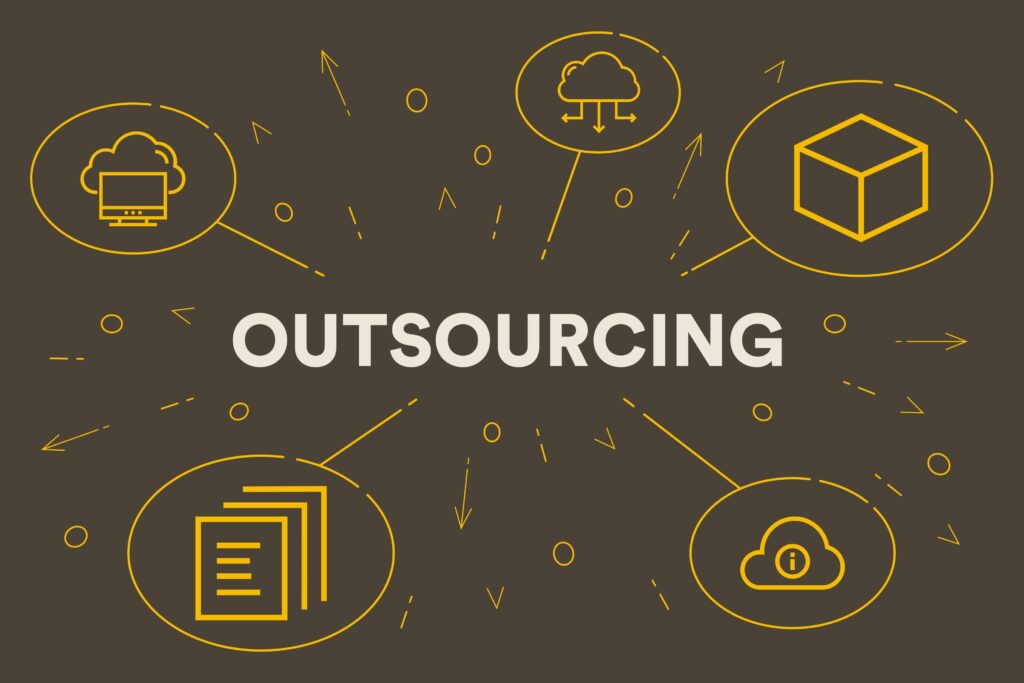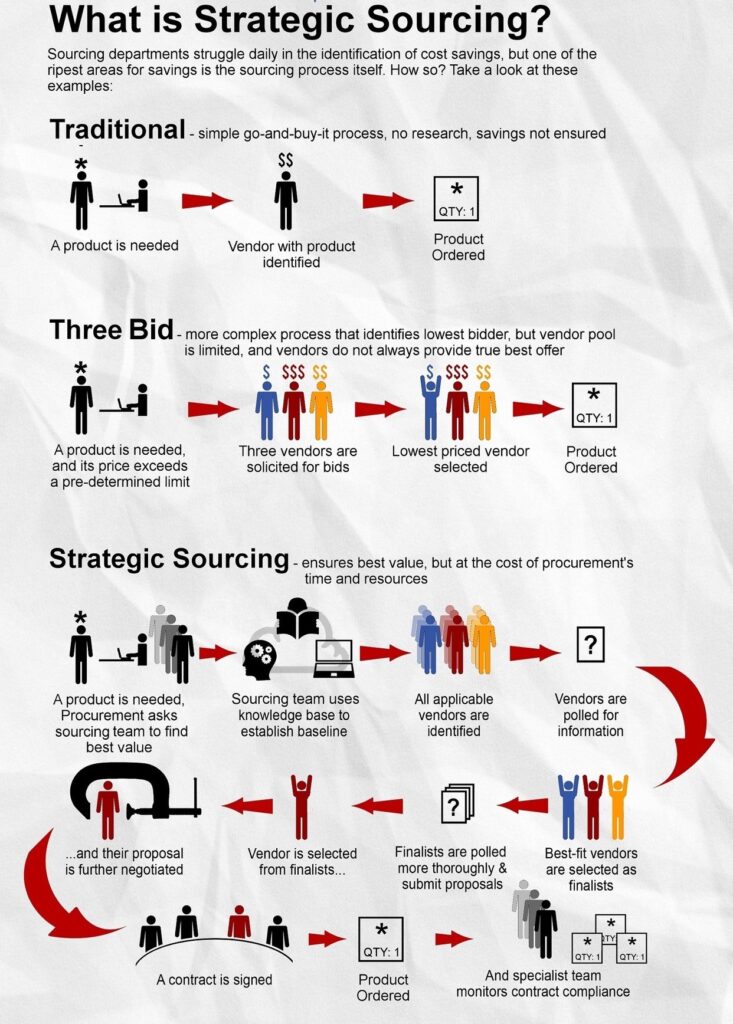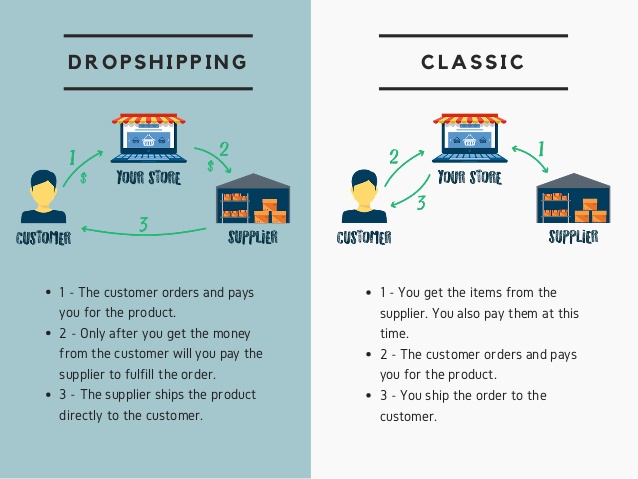How to do Product Sourcing for a Successful Business?

What is Product Sourcing?
- Product sourcing is a process that includes market research, analysis, cost assessments, and bargaining of products or goods to sell with suppliers. Product sourcing primarily aims to find the correct product for your business idea. You can visit manufacturers, wholesalers, warehouses, artisans, or other places to find the product that best fits your store, including yard sales.
- Knowledge and experience play an essential role in this process.
-
- Analyzing the market is your best option if you are new and have zero experience. Once you know what you want to sell, explore the best product for the source.
- Verify how easy or complicated the sales of the particular product you want to sell. To do this type of analysis, you can use Google Trends, Keywords Everywhere, or any other tool that helps you investigate the acceptance of a product in the particular market you wish to sell into.
- Also, compare prices, verify materials and the product’s safety, be aware of any specific permits or certificates, and ask for a manufacturing agreement with your country’s regulation (verify with the Consumer Product Safety Commission).
-
- Also, get advice from a Customs Broker on the charges to bring a product to the US or your country.
- Finally, make a vendor analysis to verify for strengths and weaknesses of each one of your vendors. Set a budget, ask for samples, and negotiate terms. After doing all this, repeatedly verify to ensure you didn’t forget anything.
- Finally, don’t forget to compare your prices with the competition.
Here are a few additional tips for product sourcing:
- Be prepared to invest time and effort: Product sourcing can be a time-consuming and challenging process. However, it is essential to invest the time and effort to find the right suppliers and products for your business.
- Build relationships with suppliers: Building relationships with suppliers can help you get better prices, more favorable terms, and faster shipping times.
- Be flexible: The product sourcing landscape is constantly changing. Be prepared to adapt your strategies as needed to stay ahead of the competition.

Where to do Product Sourcing?
There are millions of places to do product sourcing, so to avoid getting lost in the process, let’s break them into large categories.
Manufacturers or Wholesalers
Manufacturers or wholesalers:
- Manufacturers are industries designed to develop custom products according to the buyer’s specifications.
- Warehouses are locations where buyers purchase already-designed products. Then, the buyer selects the MOQ (minimum order quantity) and shipping specifications.
The manufacturers are great if you’re in an advanced stage of developing your brand or ready to scale your DIY products. In addition, the warehouses are a great option to increase diversification in your store.
How to Make Your Product Sourcing easier with Manufacturers or Warehouses?
- Find suppliers: try to find at least three suppliers
- Verify prices: compare prices with other manufacturers also negotiate fees based on quantities and shipping.
- Research product quality: ensure the quality of the materials used to produce the products is accepted in the destined country.
- Order a sample: if it is necessary to conduct any product test, now is the moment.
- Get knowledgeable of supply shortage: check if the manufacturer or warehouse has enough supplies for the future.
- Manage costs of importation, shipping, or delivery
- Be aware of damage product policies and reimbursements
- Ask your MOQ
- Make sure you understand the whole process of delivery.
Advantages of Sourcing from Manufacturers or Warehouses
- Better prices: Manufacturers and warehouses often have better prices than retailers. This is because they buy products in bulk and do not have to mark up prices to cover the cost of retail space.
- Wider selection: Manufacturers and warehouses often have a wider selection of products than retailers. This is because they do not have to limit their selection to products that are popular with consumers.
- Customized products: Manufacturers and warehouses can often customize products to meet your specific needs. This can be a great way to differentiate your products from the competition.
Things you need to consider when sourcing from manufacturers or warehouses:
- Minimum order quantity (MOQ): Manufacturers and warehouses often have a minimum order quantity (MOQ). This is the minimum number of products that you must order in order to get a good price.
- Lead time: The lead time is the amount of time it takes for the manufacturer or warehouse to produce and ship your order. This can be a few weeks or even a few months.
- Quality control: It is important to have a quality control process in place to ensure that the products you receive meet your standards.
- Payment terms: You will need to negotiate payment terms with the manufacturer or warehouse. This includes the amount of time you have to pay for the order and the interest rate, if any.
By understanding the advantages and disadvantages of sourcing from manufacturers or warehouses, you can make an informed decision about which is the best option for your business.
Here are some additional tips for sourcing from manufacturers or warehouses:
- Do your research: Before you start sourcing, it is important to do your research and find reputable manufacturers or warehouses. You can use online directories, industry publications, or word-of-mouth to find potential suppliers.
- Get quotes from multiple suppliers: Once you have found a few potential suppliers, it is important to get quotes from them. This will help you compare prices and terms.
- Visit the supplier’s factory: If possible, it is a good idea to visit the supplier’s factory. This will give you a chance to see the manufacturing process and meet the people who will be making your products.
- Build a relationship with the supplier: It is important to build a relationship with the supplier. This will help you resolve any problems that may arise and ensure that you get the best possible service.
How to Find Suppliers:
The easiest way to search for suppliers is through a search on Google. You can also look for suppliers on Alibaba (but you have to make sure only to use the site to complete any transaction). Selecting an international supplier implies being extra careful, so do all transactions through a protected (insured) site like Alibaba. In countries other than China is a good strategy to request information through your bank before making any transactions. Large bank branches usually know international commerce and can help you find the best path.
Local transactions are more relaxed but check for impressions on the Better Business Bureau. Please, do not do any transaction without verifying if the vendor has a trustworthy company. For this, you can also use the services of International Trade Supplier Verification Services or How to Know: Is My New Vendor Legitimate? from JP Morgan. They do serious research on vendors, so you must be prepared to share your information as well, such as business license and tax identification numbers.
Also, don’t forget about this:
- Use online directories: There are a number of online directories that can help you find suppliers. Some of the most popular directories include Alibaba, Globalsources, Made-in-China, IndiaMart, Worldwide Brands, SaleHoo, Banggood, and ThomasNet.
- Attend trade shows: Trade shows are a great way to meet potential suppliers and learn about new products and trends.
- Network with other businesses: Networking with other businesses can be a great way to find suppliers. Talk to other businesses in your industry and ask for recommendations.
Once you have found a few potential suppliers, it is important to do your research. Here are some things you should look for:
- Reputation: Check the supplier’s reputation online. Look for reviews from other businesses and customers.
- Quality: Make sure the supplier can provide high-quality products. Ask for samples and inspect them carefully.
- Price: Compare prices from different suppliers. Make sure you are getting a good deal.
- Delivery time: Find out how long it will take the supplier to deliver your products. Make sure you have enough time to sell your products before they arrive.
- Payment terms: Find out what payment terms the supplier offers. Make sure you can afford the terms.
Once you have found a supplier that meets your needs, it is time to place an order. Be sure to get everything in writing, including the price, quantity, delivery time, and payment terms.
By following these tips, you can find reputable suppliers and get your business’s best products.
Details You Should Know:
Here are some additional details you should know about your order from your supplier:
- Lead time: The lead time is the amount of time it takes for the supplier to produce and ship your order. This can be a few weeks or even a few months.
- Payment terms: You will need to negotiate payment terms with the supplier. This includes the amount of time you have to pay for the order and the interest rate, if any.
- Shipping terms: You will need to negotiate shipping terms with the supplier. This includes the shipping method, the shipping cost, and who is responsible for shipping.
- Delivery: be clear if the shipping also includes delivery to the warehouse; talk to your broker to find a trusted company to deliver your merchandise to the location.
- Customs clearance: If you import products, you must clear them through customs. This can be a complex and time-consuming process. You may want to hire a customs broker to help you with this process.
- Quality control: It is important to have a quality control process in place to ensure that the products you receive meet your standards. This may involve inspecting products, testing products, or working with a third-party quality control company.
- Returns and refunds: You should have a clear returns and refunds policy in place. This will help to protect you in case of problems with your order.
- Process time: how long will it take to produce, pack, ship, and deliver?
- Brand Development: how much extra will they charge for placing your logo or brand on the merchandise and packaging?
- Insurance: warehouses and manufacturers offer different types of insurance. Be aware and ask about the insurance company, the protection included, the price, the coverage in terms of shipping and delivery they offer, and find out the policy terms for the merchandise itself.
- Communications: be clear about the communication methods and time lapses to be updated. Never give for granted that a supplier understands all your details. Instead, ask to be notified of each stage and keep verifying all the details.
- Never give for granted the vendors understand you: be clear, concise, and, if possible, take a sample or a detailed sketch of what you want. This must include measurements, colors, specifics (specs), material, and all the details you need in your product. Be Very Specific!
By understanding these details, you can ensure that your product-sourcing process goes smoothly
Dropshipping
Dropshipping: Dropshipping is a method that has been offered for years. The idea behind dropshipping is to sell goods without purchasing merchandise or stock on inventory. It is an easy process but still has some tricks you need to know. Once the customer purchases an item from your site, you need to buy the product from the dropshipper so they can do the shipping. The dropshipping warehouse oversees handling everything after the sale. Therefore, you, the vendor, are the middle person listing the inventory on e-commerce.
Dropshipping is your best alternative if you start a business and have zero money for inventory. It also gives you vast experience handling e-commerce without investing in any stock.
While dropshipping is excellent for some, it is not suitable for others. First, the profit margins doing dropshipping are low compared to managing your merchandise. Also, you have to compete with other people selling the same product through the same method, dropshipping. There is also significant concern regarding service and product control. Finally, you need to be aware of the dropshipper you use. Some are responsible, but others are not, and your brand name is on the line. You can get more information in the dropshipping category.
Here are some tips for starting a dropshipping business:
- Choose a niche: When you’re first starting out, it’s best to choose a niche market to focus on. This will help you to target your marketing efforts and attract customers who are interested in the products you sell.
- Find a reliable supplier: When you’re choosing a supplier, it’s important to find one that has a good reputation and can provide you with high-quality products at a competitive price.
- Set up your store: Once you’ve found a supplier, you’ll need to set up your store. This includes choosing a platform, designing your store, and adding products to your inventory.
- Market your store: Once your store is set up, you’ll need to start marketing it. This can be done through online marketing channels, such as social media and search engine optimization.
- Provide excellent customer service: Customer service is essential for any business, but it’s especially important for dropshipping businesses. This is because you don’t have direct contact with your customers, so it’s important to make sure they have a positive experience with your business.

Fairs and Trade Shows
Fairs and Trade shows: Fairs and Trade shows primary purpose is for manufacturers to present their products to buyers. Therefore, the fairs and trade shows happen almost only once per year, per category.
For example, the Canton Fair is once a year for baby products, but there are multiple fairs all over China. The same happens in the US. According to specific sourcing, there are many trade shows and fairs in the US. The pricing is the most significant difference between product sourcing in fairs and trade shows compared to marketplaces. Fairs and trade shows regularly are direct sales from factories, making it more affordable.
Also, you have access to multiple suppliers by visiting only one place. Another advantage is seeing the new products, novelties, and innovations.
If you visit a fair or trade show for the first time, be aware that it may take you more than one day. Also, get ready to share your business cards, either physical or digital. Talk to vendors and learn about their products. It is recommended to know:
· The product you are looking for.
· The budget you have to acquire the product.
· What is the MOQ (minimum order quantity) you can afford?
· Learn if there are any regulatory regulations about the product you are interested in.
· Is the supplier giving you a competitive price?
· Do they have enough supplies?
· Is the product generic or original?
Pros & Cons of Fairs:
Here are some of the benefits of sourcing products at trade shows and fairs:
- Direct access to manufacturers: You can meet with manufacturers directly at trade shows and fairs and negotiate prices. This can save you much money compared to buying from wholesalers or retailers.
- New and innovative products: Trade shows and fairs are a great place to find new and innovative products that you may not be able to find elsewhere. This can help you to differentiate your Amazon FBA business from the competition.
- Discounts and promotions: Many manufacturers offer discounts and promotions at trade shows and fairs. This can help you to save money on your product purchases.
However, there are also some challenges to sourcing products at trade shows and fairs:
- Time commitment: Trade shows and fairs can be time-consuming. You must be prepared to spend several days visiting different booths and talking to manufacturers.
- Competition: There is a lot of competition at trade shows and fairs. This means you must be prepared to negotiate hard to get the best prices.
- Quality control: It can be difficult to assess the quality of products at trade shows and fairs. You may want to consider bringing a product tester to help you evaluate the quality of the products you are considering buying.
Where you can find information about fairs and shows worldwide
TradeFairDates: This website lists fairs and trade shows in over 150 countries. You can search by industry, location, or date.
Conclusion
Product sourcing is the process of finding and acquiring products to sell. It can be daunting, but it is essential for any business that wants to succeed. There are many ways to source products; the best approach will vary depending on the specific business. However, some general tips can help businesses source products effectively.
First, it is important to do your research. This includes understanding the needs of your target market, as well as the competitive landscape. Once you understand these factors well, you can start to identify potential suppliers.
There are many different ways to find suppliers. You can search online, attend trade shows, or network with other businesses. Once you have identified a few potential suppliers, it is important to do your due diligence. This includes checking their references, reviewing their financial statements, and inspecting their products.
Once you have found a supplier that you are comfortable with, it is time to negotiate a price. This is an important step, as the price of the product will significantly impact your profitability. Be prepared to negotiate hard, and don’t be afraid to walk away from a deal if you are not happy with the price


